Reflections on the Exhibition of Fujimoto Sōsuke
Postmodernism is an unaccomplished work. Drawbacks of modernity is today so obvious that it is too banal to just denigrate modernity, but the convincing alternative has not been uncovered. As a result, the rivalling notion of modernity and post-modernity coexists over a century. Architecture is not an exception. Design of houses are always an outsome of competitive requests of mass-provision and diversity / customisability. The earlier is not just an utilitarian value, but also is based on humans' radical admiration of aesthetic idea that truely beautiful things are both simple and convenient. Meanwhile, the latter is another, more practical way of persuing idealism. Accepting existing diversity in society to the world of architecture, designers are not a passive engeneer subject to the reality, but struggle to create influential works on humans' behaviour. They believe that architecture can change humans' movement to ideal status.
While aesthetic simplicity can be expressed just by one work, any movement to reform society with architecture requires a great number of buildings enough to have an influence in the vast world. However, their work is paradoxically adopted invertedly. Simplicity leads to economic advantages, which is prerequisite of mass-provision. The particularity and avant-garde challenge of the latters have no chance to be adopted but in competitions held by public sectors.
This article does not intend to classify architects with this axis. People are complex, and none advocates just one idea. They admit some from one idea while they absorb others from the competing idea. Fujimoto Sōsuke is among them: in his works, we can see both his expectations of simple truth of the world and his challenge to redesign people and society.
Fortunately, it is quite easy to explain Fujimoto Sōsuke this year. The well-known Grand Ring in the expo held now is designed by him. To tell the truth, it was the only clue to reach his name also for me before visiting the exhibition on his works. Anyway, let us see some of his works and reflect on buildings. Some of my comments might give a hint to his conceptions, and others are just a rambling feeling.
Children's Centre for Psychiatric Rehabilitation
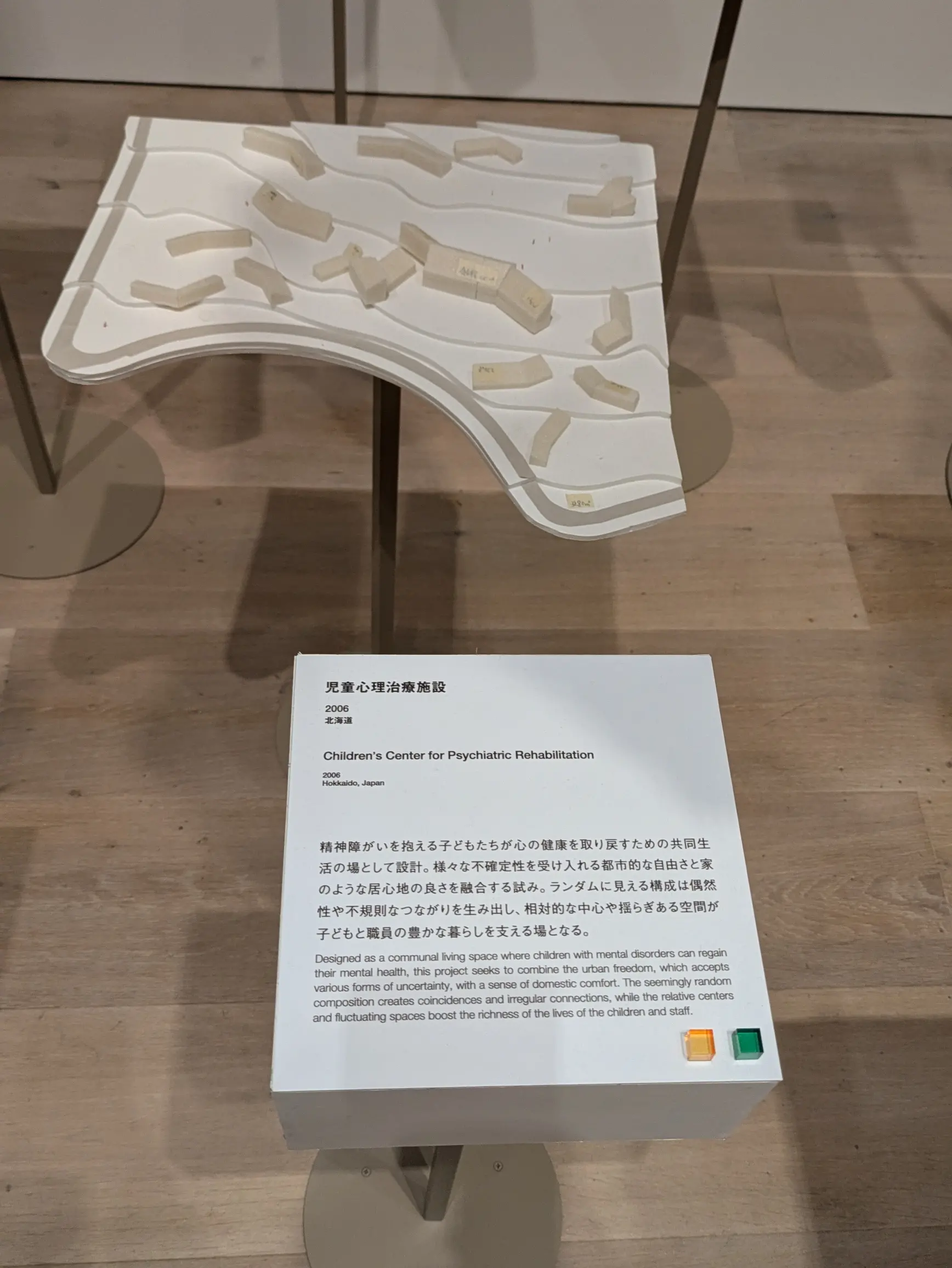
Under Lenin's governance, soviet architectures were seeking communist housing, which helps realisation of Engels' idea of liberation of people from family. They try to equipped a common restaurant and a nursery school in every appartment buildings so that women are freed from housework and pesue their economic and identarian independence. Architecture affects people's behaviour not only from functional side, but also from a mental aspect. Resort hotels are usually designed openly so that visitors can enjoy their stay open-mindedly.
Then what about a children's care centre? From an ethical aspect, how should architects design it? Fujimoto argues "children with mental disorders can regain their mental health" with his housing which "combine[s] the urban freedom, which accepts various forms of uncertainty, with a sense of comfort" thanks to "the relative centers and fluctuating spaces". It is uncertain what kind of mental disorder Fujimoto images. The relative centre (or decentralisation) has an ambivalent effect to children here. One is deconstruction of the "standard" nature of humans, which embraces neuro-diversity. The other is to force them to accept unpredictability of the real world, which sometimes makes their lives difficult. Probably Fujimoto's concept is the latter. His notion of "rehabilitation" implies, not as much as "treatment", his thought that their nature should be alternated to more "normal" one. Here I do not argue its ethical legitimacy. The pastoral conception of neuro-diversity averts gaze from difficulty their particular lives are faced with. Anyway, here it can be found that he is somewhat a progressionist as an archictect, who struggles to ameliorate people's nature with idealistic architectural environments.
Musashino Art University Library
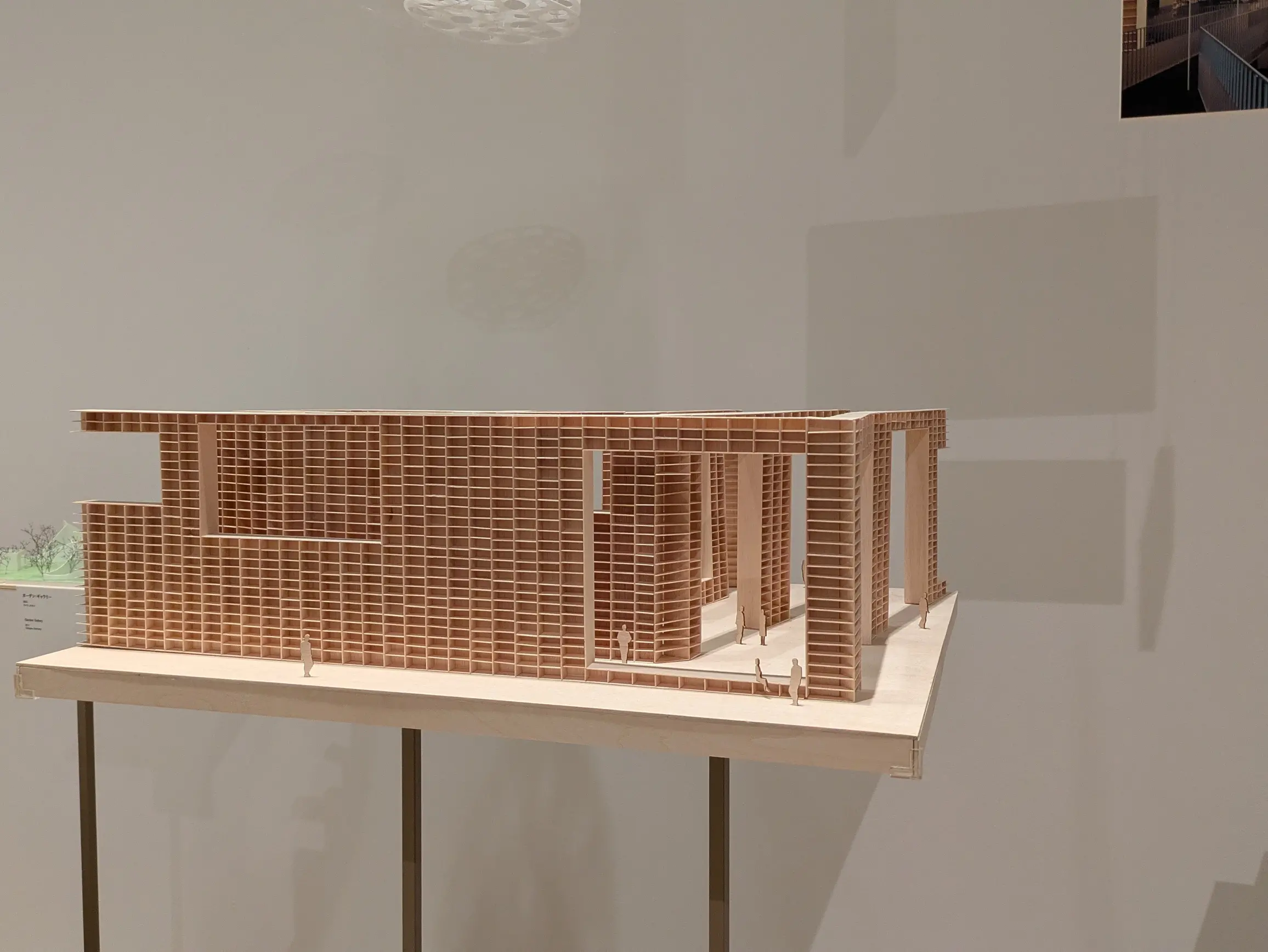
Nowadays, it is quite common to see photos of beautiful libraries shared on social networks. Most of posts are shown with a banal critics, saying that they treat books as aesthetical ornaments, which marginalises the central role and the value of books in libraries.
Fujimoto's design is similar indeed. The walls are a mimic of bookshelves, which towers almost eternally to the roof, which symbolises the immense knowledge compiled by our ancestors, and depth of truth left to be seeked for us. In this exhibit, the more impressive is the photo of the actual usage of the library by university. It is astonishing that they do not use all of the Fujimoto's bookshelves. Thanks to this use, his work is freed from an already classical allegation of pratical inefficiency as library which insinuates the attitude of the managers towards libraries, since it allows our hands to reach every books in fact. Moreover, the unused space near the roof denotes the undiscovered area of truth, which enhances the intention of the designer.
Beton Hala Waterfront Centre
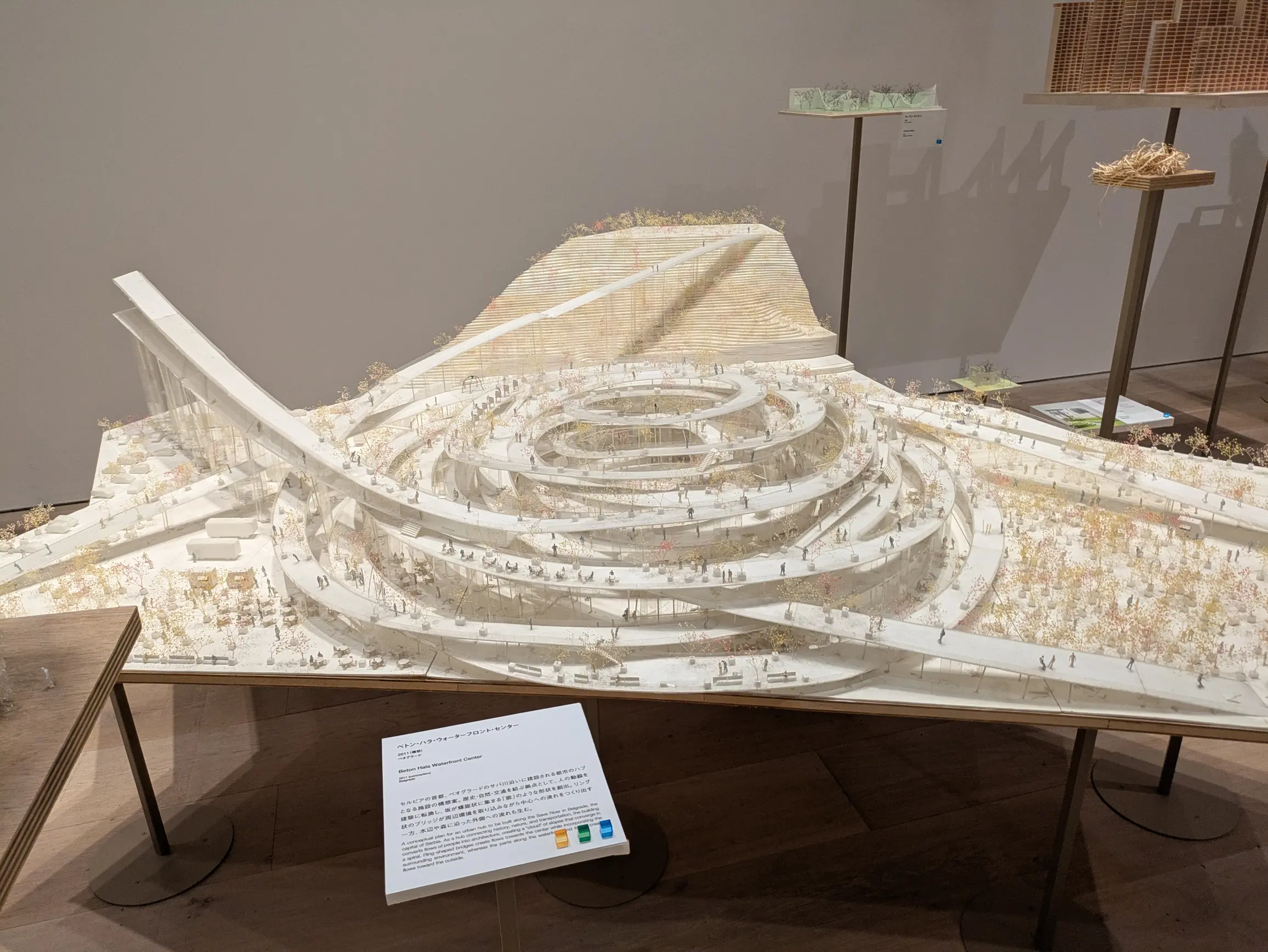
Beton Hala is a commercial space in Beograd. Regrettably the name of this city is remembered by people all over the world with the shocking civil war, which inruined the heritage of Olympics, the festival of peace.
While Beton Hala perhaps does not have such a symbolic meaning to Beogradanin people, since it is distant from the ruin, I cannot help contemplate that this design materialises Fujimoto's concept of "open boundaries" the best. Circles can be intercept, but the endless spiral cannot. It is already collapsed if we determine the boundary as that which divides the outside and the inside, but therefore cannot be collapsed by anyone else. It has an extreme strength similar to that of quake-absorbing structure. Even more, the vague boundary insinuates gradual inclusion of strangers without pressure of assimilation, which is a prerequiste attitude for pacifists.
Is this architecture?
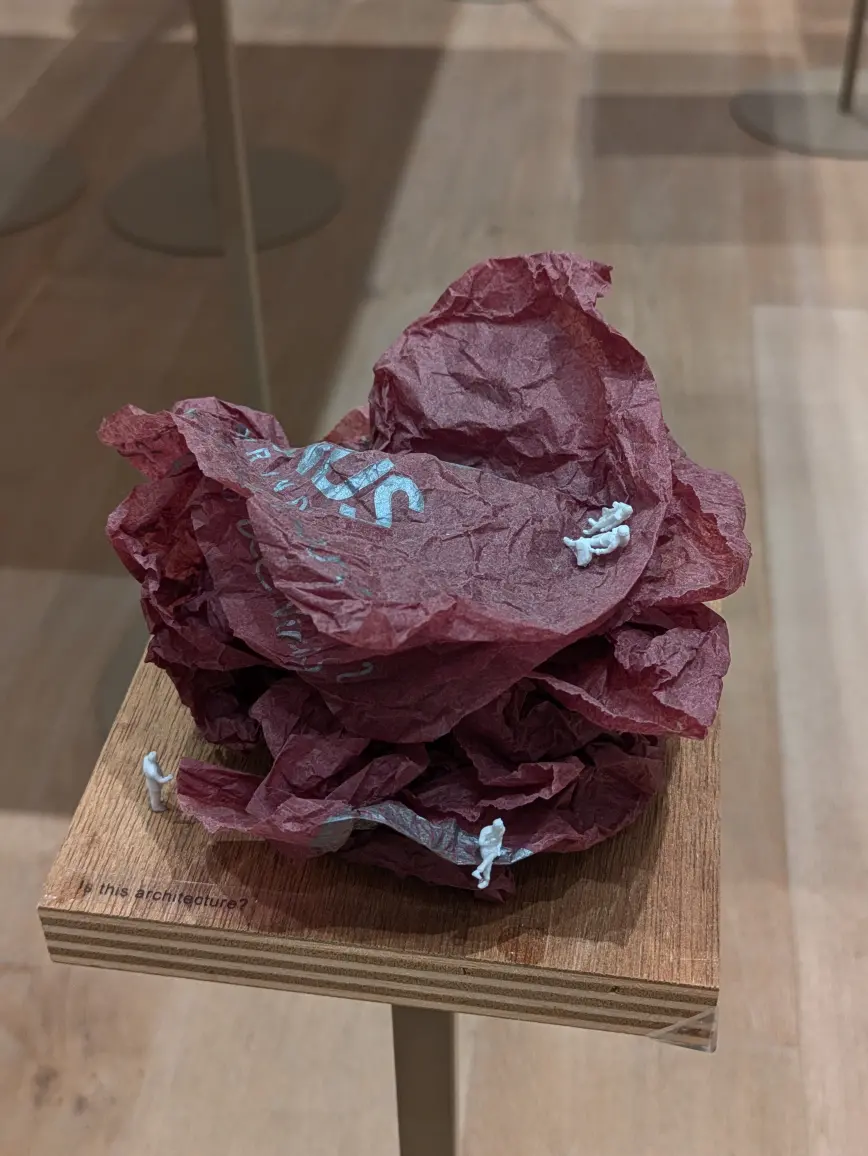
Just cute and funny.
an untitled study
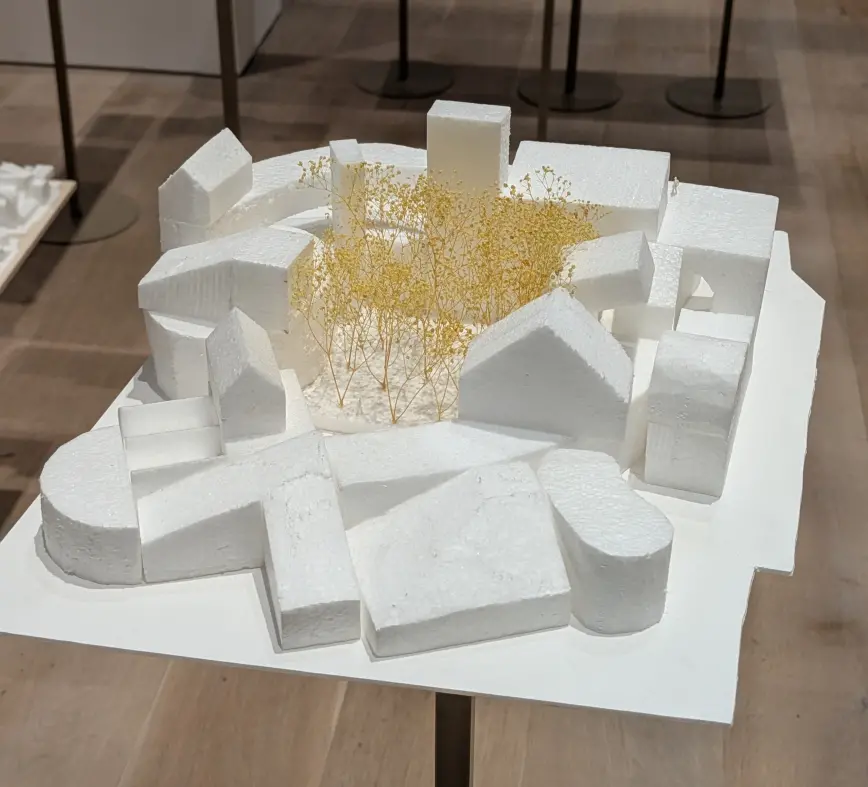
This composition of geometric shapes reminds us of our childhood memory of building blocks, which is the most universal and primitive experience of designing buldings. Picasso said "It took me four years to paint like Raphaël, but a lifetime to paint like a child," but Fujimoto's seeking of use of simple shapes cannot be accomplished just with innocence. Even a simplest shape at a glace in his work is the result of his calculation which allows the effective service of room to the users, which might be a disappointing news.
an untitled study
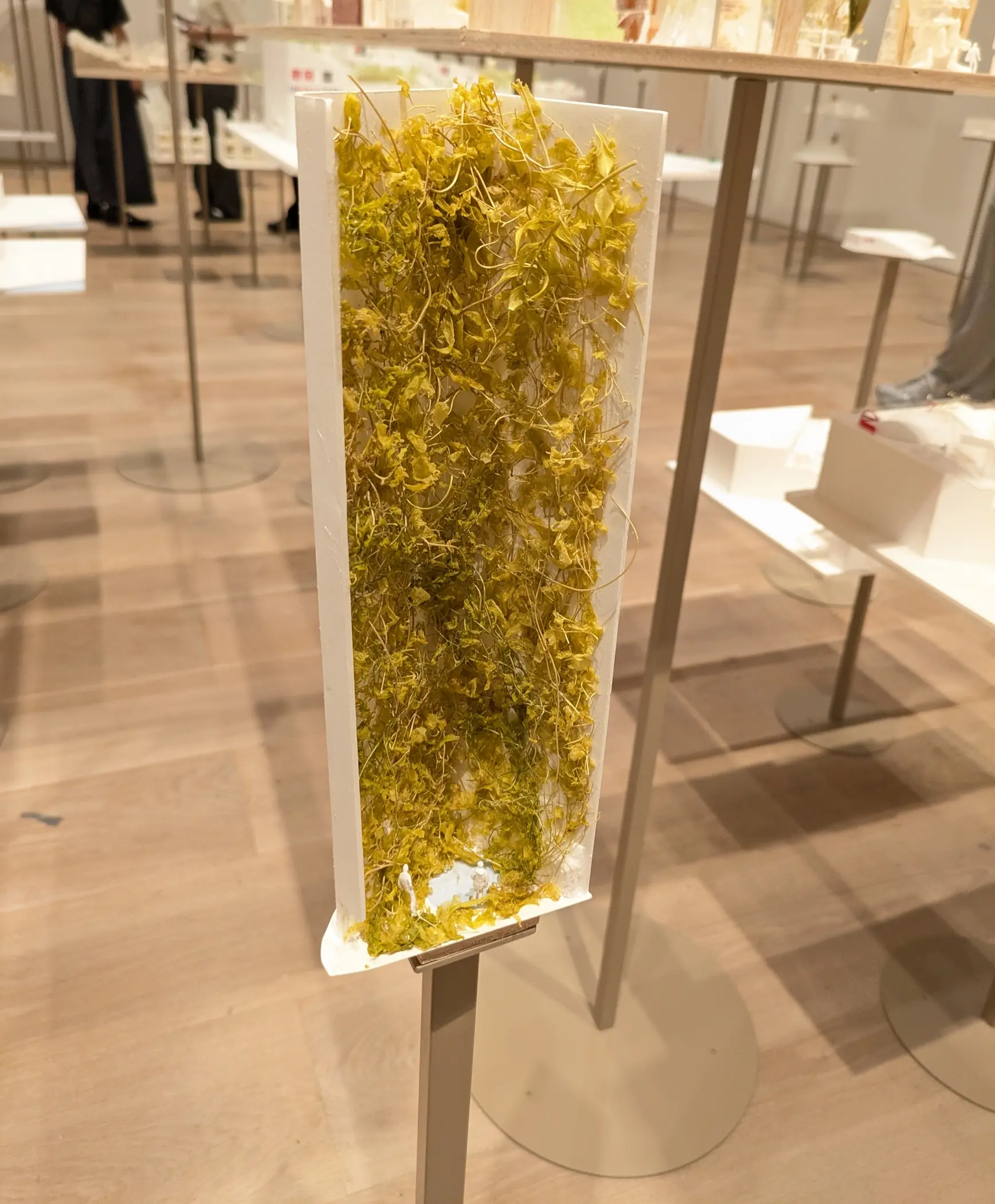
This reminds us an awkward fact that our most daily ingredients including wood and plastics are indeed carcass, which highlights our finite lives in the infinite time.
Shenzhen Museum (Shenzhen Reform and Opening-up Exhibition Hall)
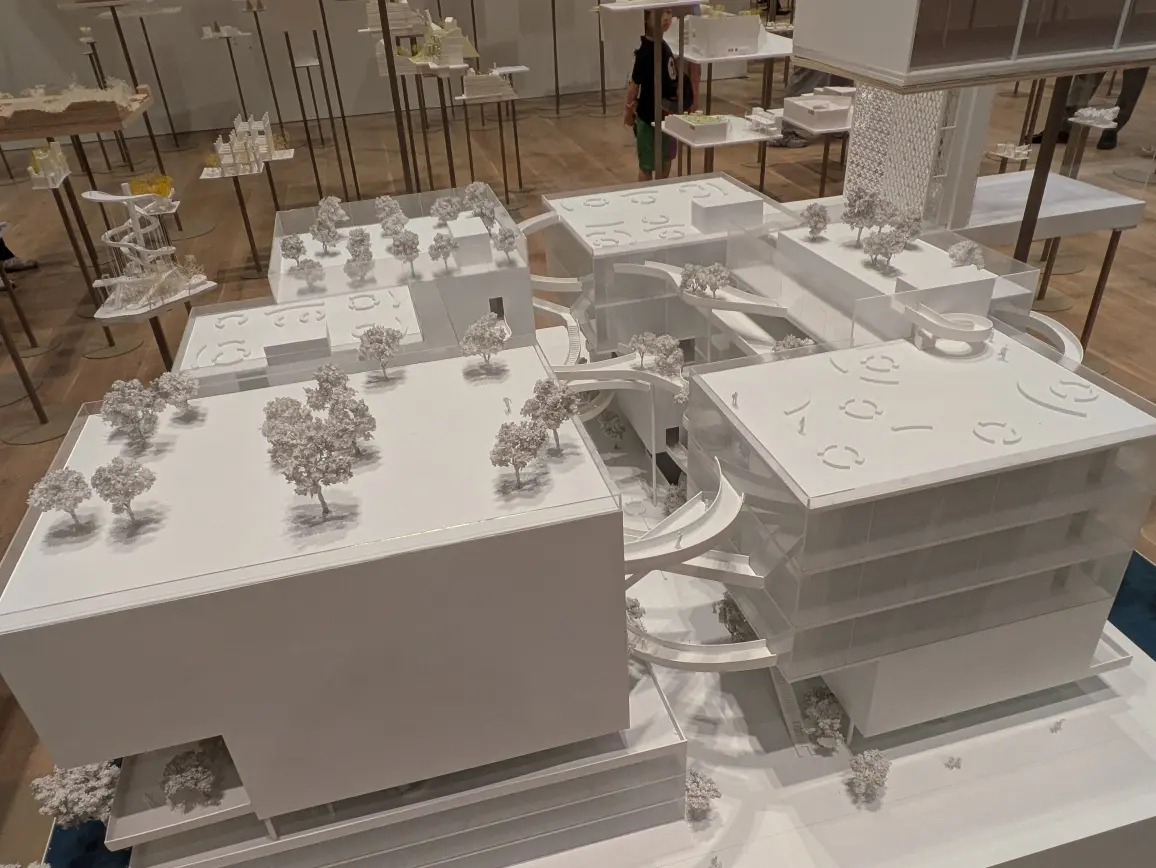
This work is "based on the concept of a miniature enclosed garden" and is "a modern interpretation of a traditional landscape garden." In this work, four buildings are interconnected and form an internal space in between. All of the four buildings serve as a public forum. It is the true modern interpretation of enclosed garden, which was owned by a single family in feudal eras, but is a wealth of society realised by collaboration of citizens.
Plan to Rebuild Shibuya Municipal Hiroo Junior High School and Plan to Rebuild Shibuya Municipal Shōtō Junior High School
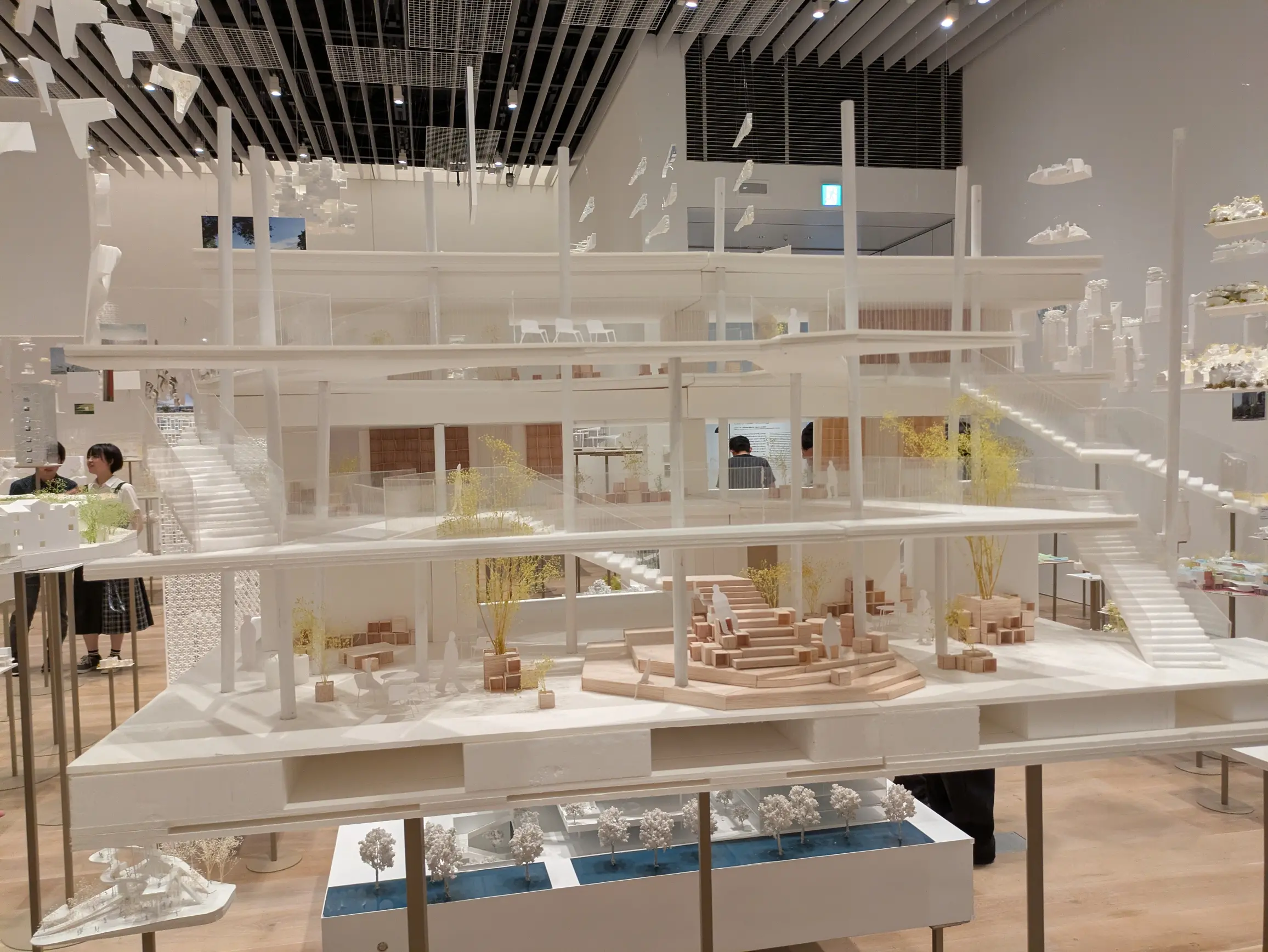
On one hand, undoubtfully universal education is one of the most influential power of the gouvernment to citizens. One the other hand, avant-garde architectures are often adopted by public sectors. I wonder how this libral architecture affects pupils' development?
Shiroiya Hotel
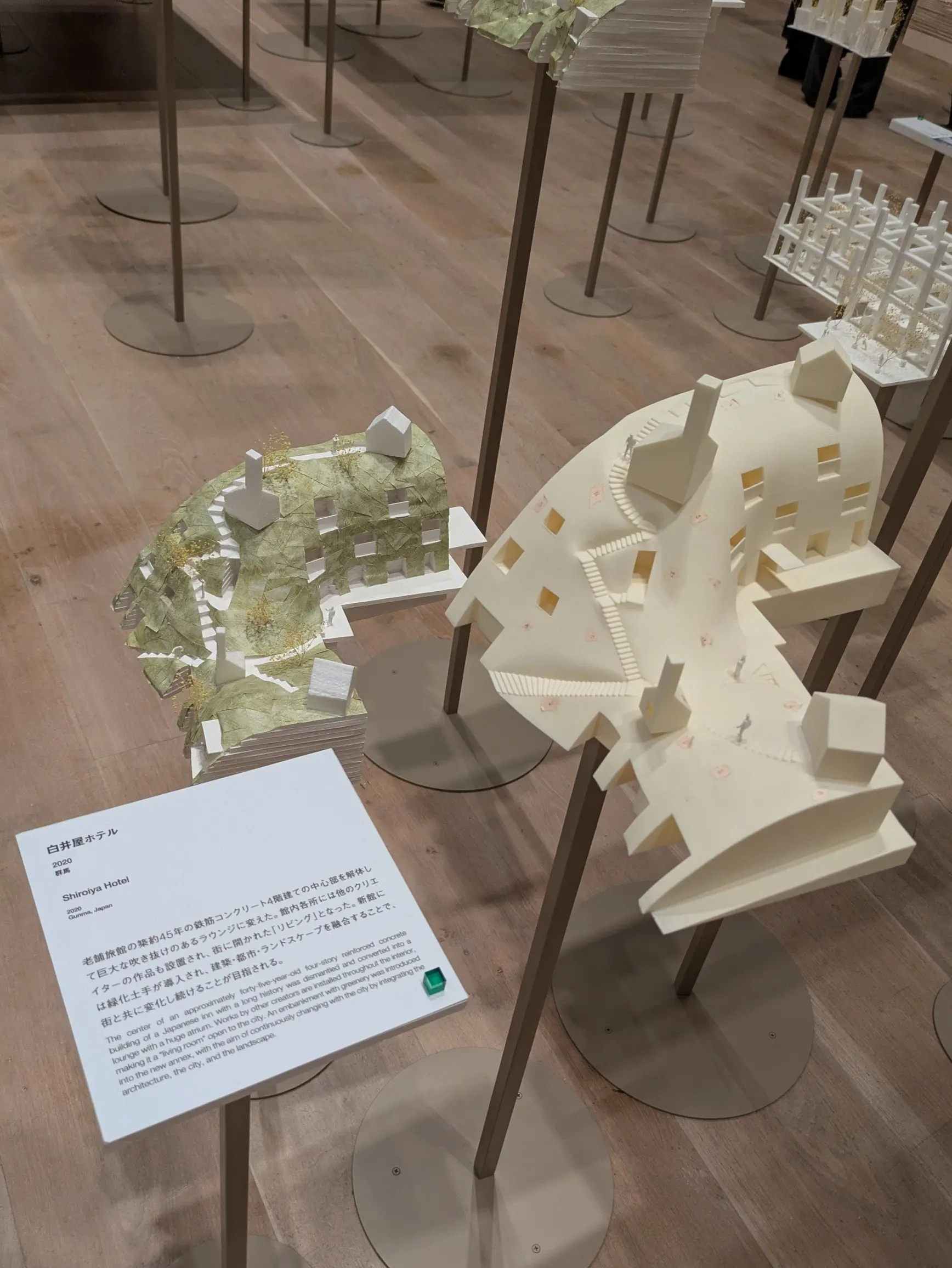
The organic lines of the building reminds us of Gaudi's appartment buildings. However, this is more a Japanese version. With the embarkment with greenery, the new annex of the hotel is aimed at "[continuous] changing with the city by integrating the architecture, the city, and the landscape." People, nature and landscape are interacting and cohabitating elements rather than Western postmodernists' concept that the nature is the aesthetic creature to be immitated by subjective humans.
Hida-furukawa Station East Development
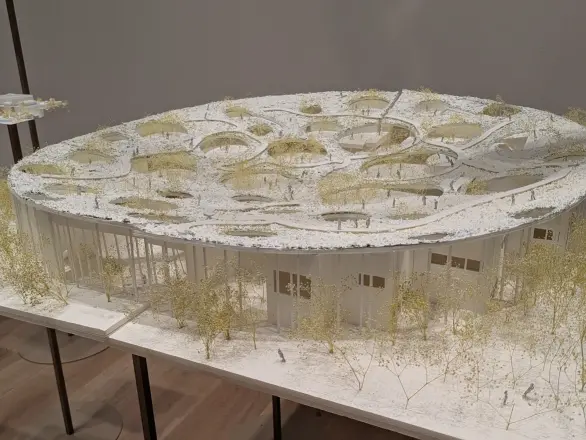
Human and nature is interactive. If so, will nature keep a memory of us the human race after we were to extinguish from the world one day?
The roof of this work is organic-shaped, while the internal structure is a quite common wall and equipments. It is as if nature (or power of organisms) tries to immitate our works and reduplicate humans' architecture, but with a completely different way — while humans construct analytically, first base, then pillars, roof at last for example, It nature might generate it simply from bottom to top like a printer prints letters not by strokes but gradually with all the parts at once. Immitation is an obedience to how it looks, which proceeds analystics or structing.
Perhaps I came up with this idea from a notion "postapocalyps", which describes a world after extension of the human race in Japanese subculture. In the manga work Girls' Last Tour, the tall pillars immiting their "gods" (which seems to be another species of living things cohabitating with the last human beings) looked somewhat artificial, meaning that their world generated a species influenced by human civilisation. It might be that the location of Hida-furukawa station made me have such an imagination: It is where a meteorite fell in a famous animation movie Your Name.
The Grand Ring for Expo 2025 Osaka, Kansai, mock-up
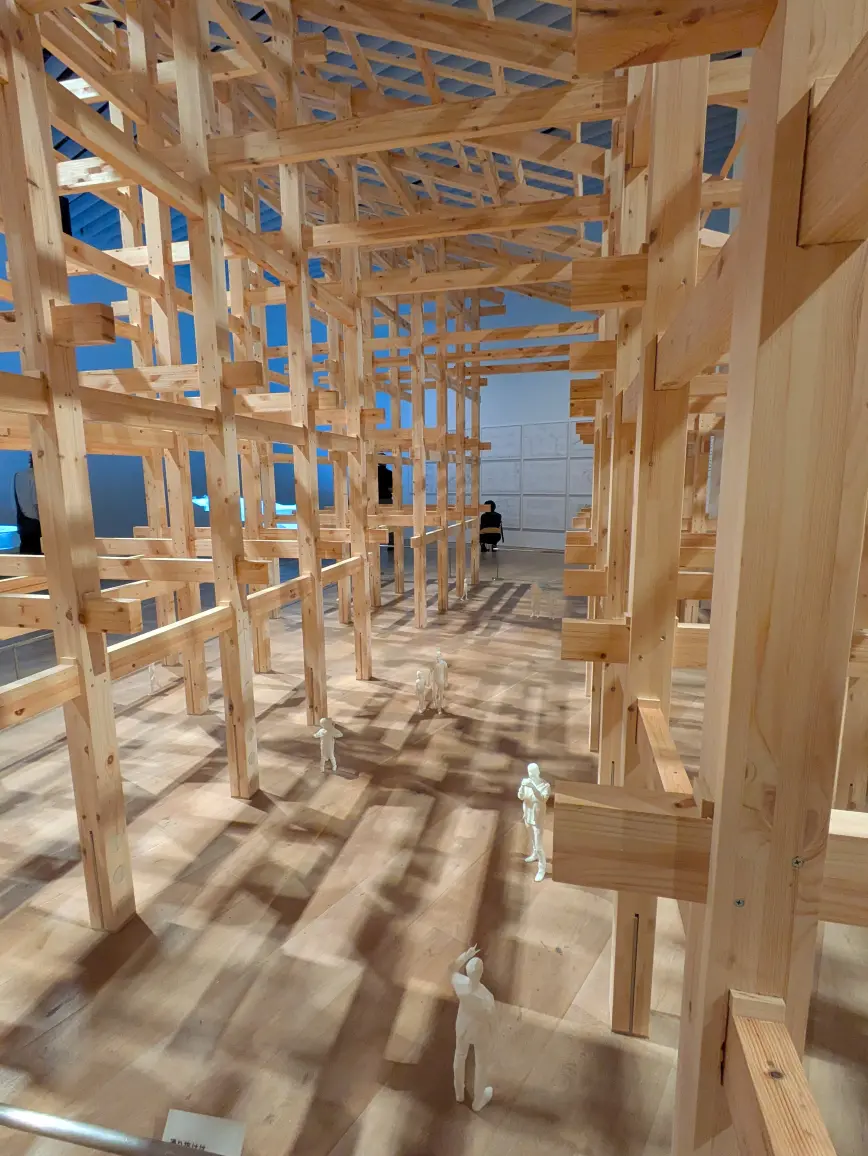
Gaudi's appartments were directed to humanism, which liberates people from utilitarianism. However, it was resided only by wealthy people. Even worse, the inhabitants were intentionaly chosen and a certain class is excluded. The condo owners did not question the maids' room equipped in their residence, the narrowest area without enough space to place something extra, in contrast with furniture with elaborated taste in the owner family's every room.
In the Grand Ring, the height of this structure is redandunt. That is why it lets us feel open-minded. Openmindness is a humanist value, but might to allowed only to affordable people even today if its can be reaslised only with redanduncy, just like the room for maids in Gaudi's appartments in the first years of the 20th century. It has passed almost a century after the Great Depression. It was the trigger of radical innovation of society. The property right was absolute value in the 19th century, but even the most radically liberalist nation - the United States started to doubt it, and started to consider the right of life of deprived class, which is a product of commercialism justified by the absolute trust to the property right. Now, none can be so innocent as people in la fin de siècle about the economical gap. How far have we approximated to the universal humanism ever since?
The exhibition The Architecture of Sou Fujimoto: Primordial Future Forest is held at Mori Art Museum, Azabu, Tokyo until 9th Nov. 2025.